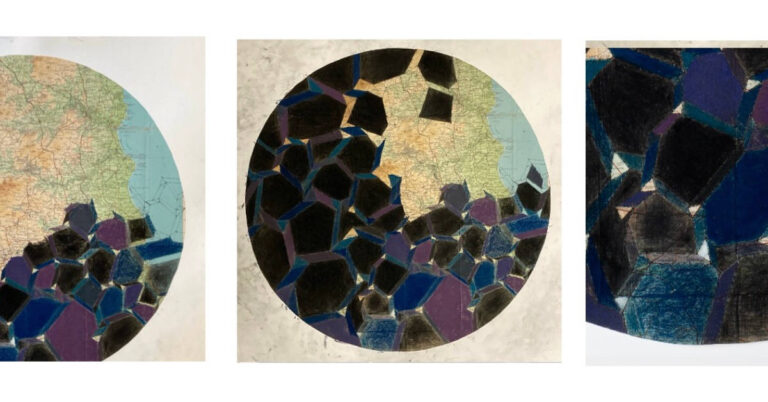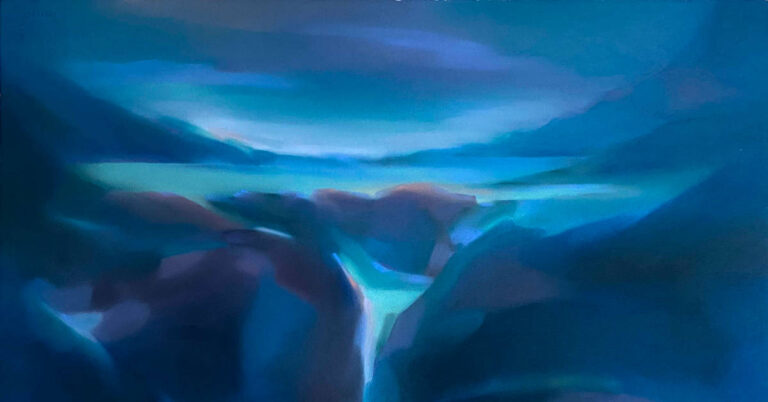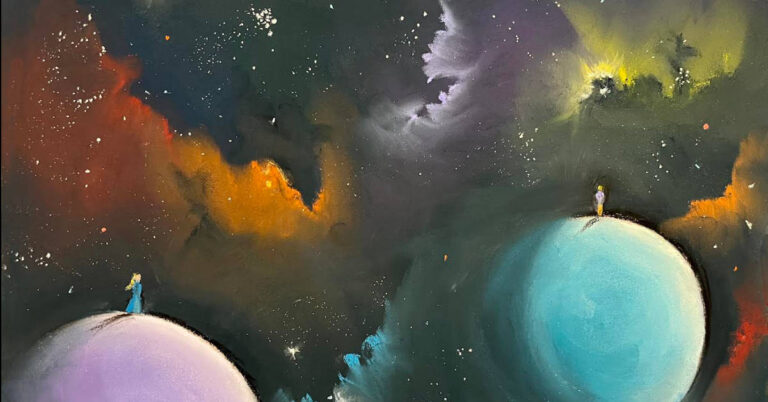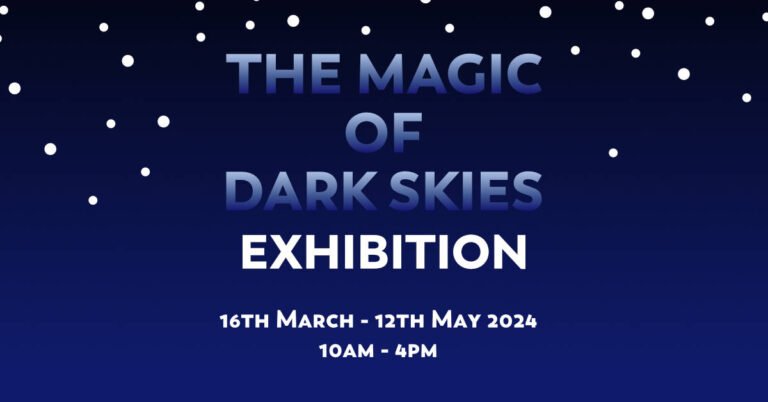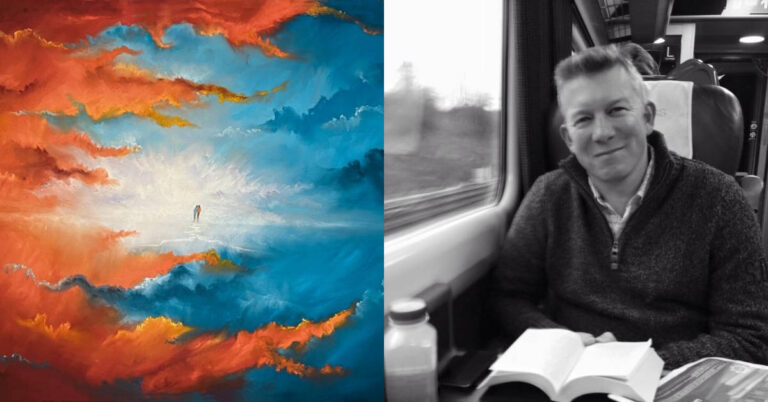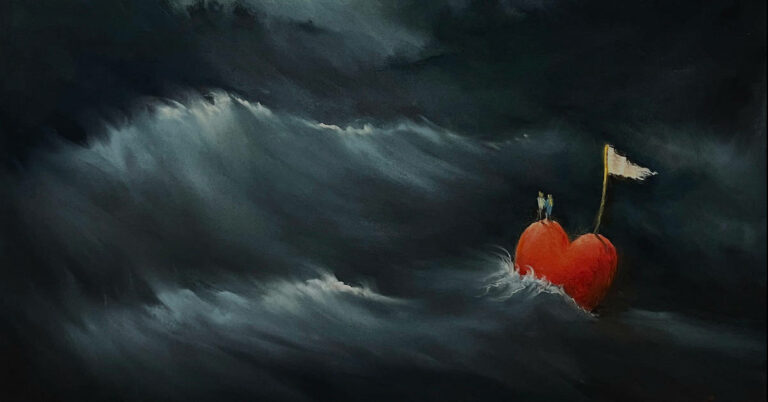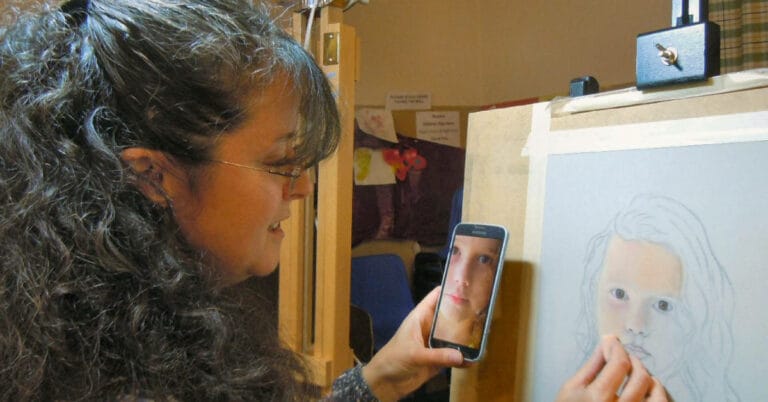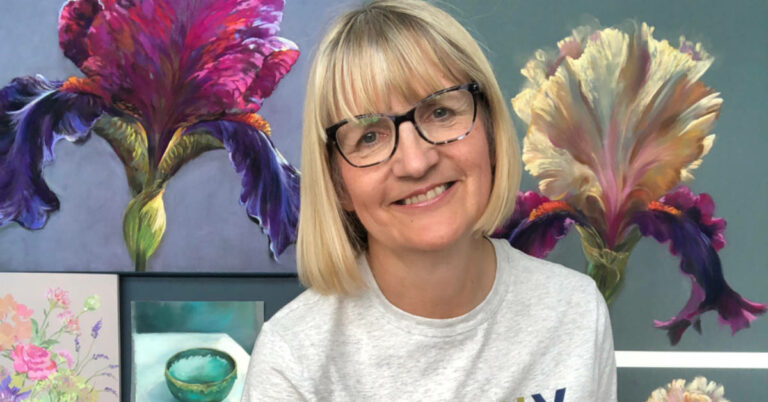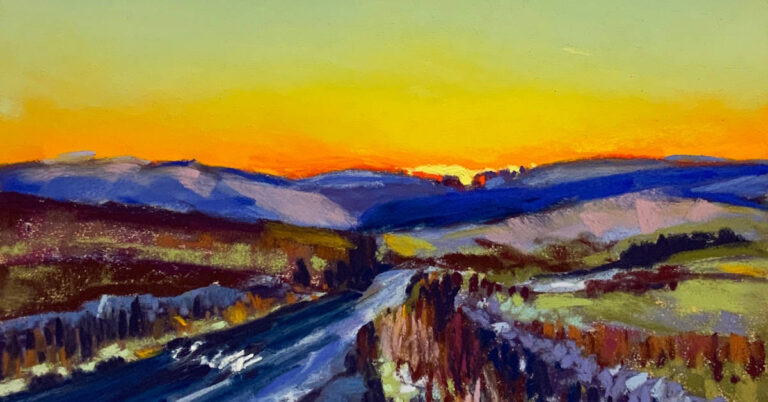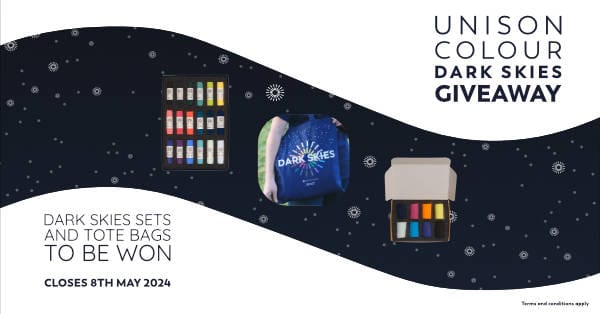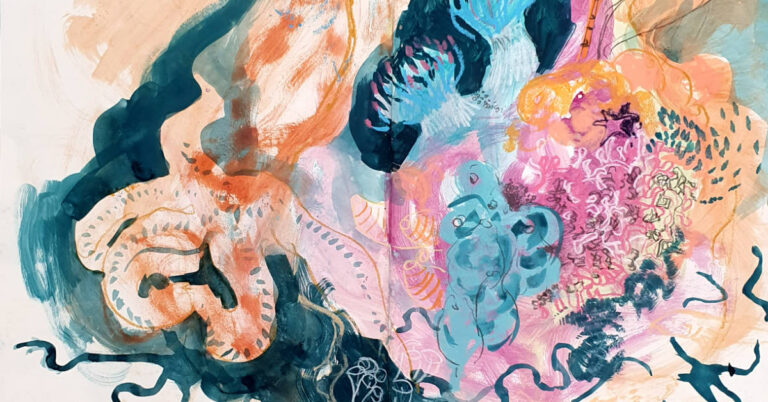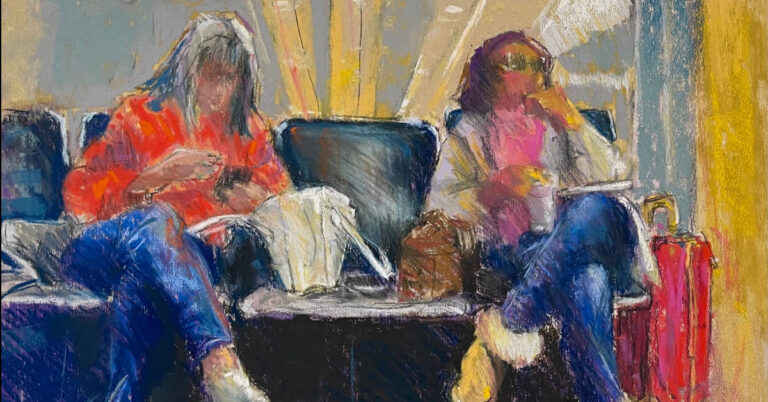In today’s “Interview with an Associate Artist”, Steve will be chatting to Henry Falzon. Based in Malta, Henry comes from a broad artistic background including fine art photography. A life-long learner he thrives on individualism and unexpected processes.
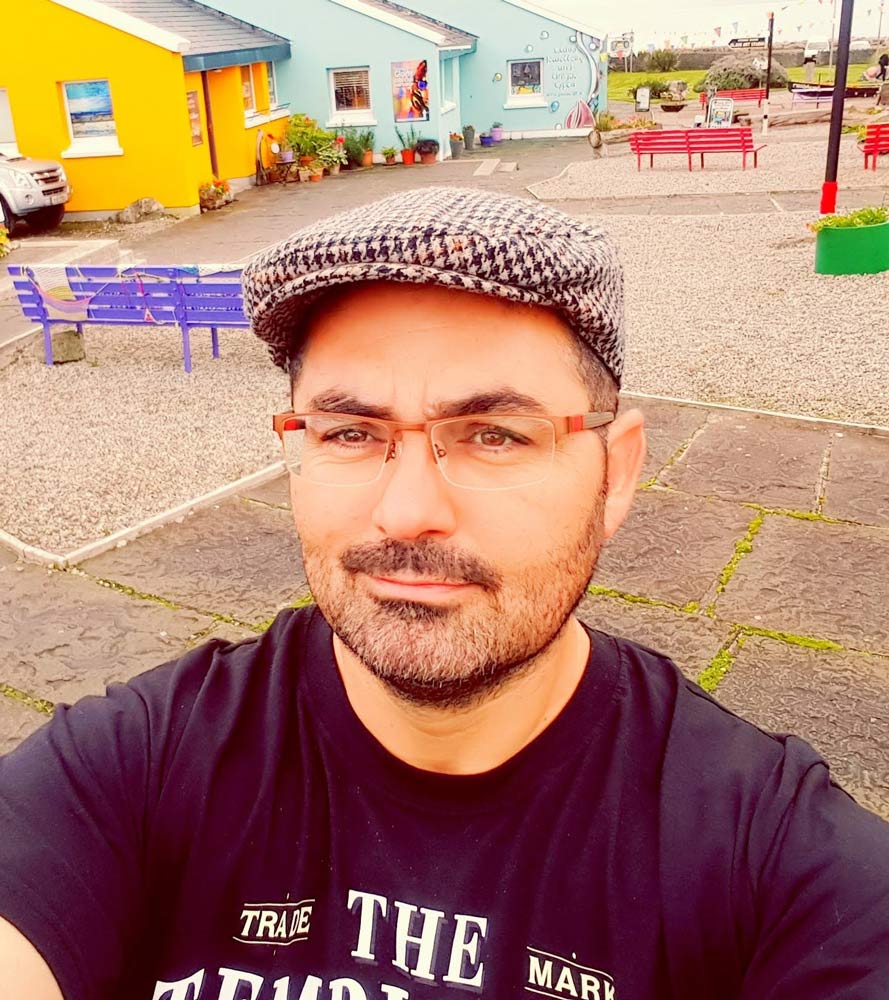
Steve: Henry, thank you for taking the time for today’s interview, could you tell us a little about your journey into the art world and how you found pastels?
Henry: I started my art journey at a young age, sketching and doodling along. I never studied art or took formal education in any artistic discipline. I enjoy the journey of discovery. It’s an intimate exercise. I cannot fathom how an external person can tell you how to go about expressing yourself. I never saw myself as a ‘proper artist’. I think I’m enthusiastic about art, that’s all. I also spent a decade shooting film photography in the 90s – that was my teacher. Ten years in solid Black and White photography is one hack of an apprenticeship in tones, compositions, narrative and yes, colour. Pastels only came about after an accumulated disillusionment with wet media. I realised that I could achieve what I had in mind far more effectively with drawing than with mixing and applying paint.
Steve: Your work is not easily categorised, how would you describe your style? As an artist does your work have a message for the world or is there something you particularly want to achieve through art?
Henry: I paint my ideas and inclinations – which vary almost seasonally. I’m not interested in ‘signature work’. My only scope in art is to experiment and have fun, all while saying stories are hidden in my work. When I feel that my current art phase is becoming a bit of an assembly line, I have alarms going off in my head and it’s time to move on.
Steve: Is there a particular project that you are working on at the moment or have planned?
Henry: Apart from pastels, I have charcoal work and printmaking projects going on too. Charcoal is basically pastel work using just black and only black. Printmaking is a different and wonderful beast that like pastels, needs carefully planned colour strategies to work well. Everything is linked according to my books.
Steve: How has your style changed in any way as you’ve developed as an artist and do you see your work going in any particular direction in the near future?
Henry: I’m clueless where I could be in 10 months time. I hope to stay hungry towards art, enthusiastic and curious. These are my permanent credos. Styles evolve, and plans in art are almost useless.
Steve: What is your greatest artistic triumph / achievement?
Henry: I do not feel that I have climaxed in anything. I have no claims. I feel I’m still a dwarf when I see the giant talent that certain artists have.
Steve: Which other artists do you particularly admire and what is it about their work you are drawn to?
Henry: I spend a lot of time going over artists work over the internet trying to feed my curiosity. There are tens of thousands of brilliant artists in the world. My artist spectrum is very broad. From ceramicists, to photographers, to painters to sculptors to musicians and what not. We are all making kind of ‘useless’ artifacts that are gorgeously critical to our souls. It’s all very much connected. I urge fellow pastel artists to look critically at all forms of art and bring other artists enthusiasm back into your pastels.
Steve: Why Unison Colour pastels? Do you have a particular favourite from the range?
Henry: I chose Unison Colour (I work exclusively with Unison Colour, bar pastel pencils when I need detail) for two reasons. First is the generous pigment strength that is a quality on its own, second no other pastel maker has invested so generously in greys and de-tuned shades as Unison has in its spectrum of offered colours. There are still gaps in the range (where are my peachy-ochres?), but I cannot really complain!
Steve: What is it like being a Unison Colour Associate Artist?
Henry: Its free Champagne and Limousine rides every day… Honestly, it’s about giving feedback and suggestions to Unison Colour HQ, with the aim of broadening and fortifying the already excellent product. More can be done on certain aspects, but getting these ideas into production is a mammoth task so changes come slow and considerate.
Steve: If you were to offer one tip and one thing to avoid for a beginner to pastels, what would they be?
Henry: Too many novice pasteller’s fall in the candy colour trap. One might buy a set of 50 pastels, half of which are near useless tube-strength colours, resulting in work that looks like a fruit salad. Get those vital muted colours. The initial cost outlay for a starting pastel artist is daunting and could eat a serious chunk of your savings, but half measures will backfire.
Steve: Are there any tools or particular pieces of equipment that you use with your pastels that you wouldn’t want to be without?
Henry: I cannot do without my reference images, my annotations and colour swatches. My pastel work is carefully planned and preparation is key. Often the conceptual/prep phase is much longer than the actual execution of the piece. I’m also keen to shoot my own reference images. I use a wide range of photographic means, including drones and underwater cameras – just to make sure I use my own stock references.
Steve: Which papers do you prefer working on and why?
Henry: I only use two papers – Canson Mi Tints Touch, and Clairefontaine Pastelmat. The Canson is a silkscreen printed pumice-infused acrylic print on a thick paper. I love it as it’s great for adding alcohol washes and airbrush substrates. On the other hand the Pastelmat is a delicate surface (very often having imperfections) that has a gorgeously gripping micro-velvety structure – ideal for detail work. Pastelmat has no substitutes in my opinion.
Steve: Do you think that social media adds to or detracts from the world of art? Same question but linked to the development of an artist?
Henry: It’s a double-edged sword. It gave a voice to everyone, only to join a mass screaming cacophony. The Web has oversaturated every aspect and watered down the expert and the mediocre, who now swim in the same pond. On the other hand, it cut some tall poppies, toned down the high-priests of art and opened the floodgates that were then mainly open to luck and mystery dealings. Overall, the internet is beneficial to the smart artist.
Steve: Do you enter competitions and curated shows – if so, are there any tips you can share in getting your work accepted – If you don’t enter, why don’t you do this?
Henry: Competitions? Never – this is my opinion and speaking of myself, it’s pretty much an echo chamber to me. Jurys are a detachment from real life and hark of protectionism and style censorship. No one has any iota of authority on art either learned or acquired, so jurors or judges are self-defeated in concept.
Steve: We’re going to finish by having an in-depth look at one of your pieces. The piece you’ve chosen is ‘Beach Walkers’. Please talk us through it.
Henry: I chose beach walkers to try to showcase that pastels can look good with very simple compositions and very few colours. I have a substantial selection of pastel shades, but I select like 9 colours only from start to finish. Also, interestingly, in this piece is the clear use of airbrushed acrylic inks. I could have perfectly well achieved the airbrush marks and shades with pastels, but I had fun with spray. The bottom line is to inspire others to experiment with pastels and get out of the framework. Purist crusades of virgin pastel work could be a trap. Many media marry with pastels with different degrees of compatibility. Try watercolours and charcoal.
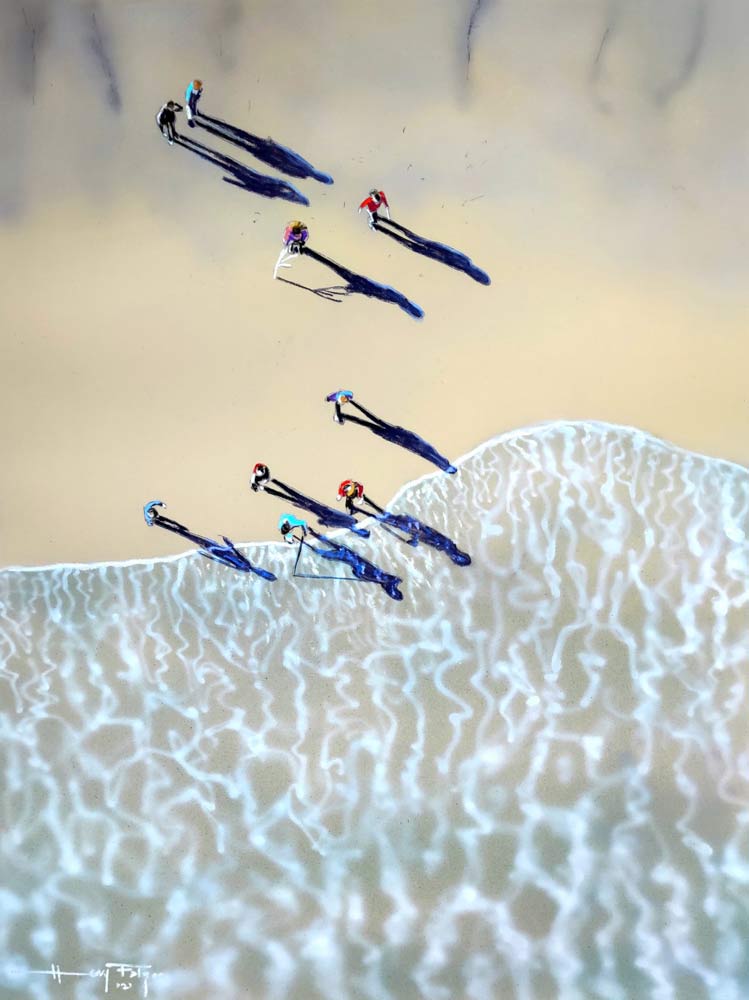
Steve: Henry, thank you so much for the insight into your work and into you as an artist, as well as the invaluable tips. For those who wish to see more of your work, where can you be found?
Facebook – Henry Falzon
Website – www.henryfalzon.com
Instagram – henryfalzon
